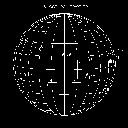
|
020104:
A superhot coronal structure leads to a CME?
The complex event that we began describing in
last week's nugget had several novelties:
first, a superhot source with rapid fluctuations
accompanied by a partial ejection, with no coronal
manifestations;
second, hot on the heels of this, another event with massive coronal
effects.
|

|
020111:
Perplexing definitions of coronal holes
Coronal holes are easy to spot in soft X-ray images - they are almost
absolutely dark.
The magnetic field lines within these dark hole-like regions are
open, in the sense that they support the solar wind.
A particle can trace out the field line, in principle all the way from
the photosphere to Andromeda.
|

|
020118:
A suggestive before-and-after view
The before view here shows
footpoints of magnetic loops that disappear during the flare.
Just the pre-flare structure that suggested complicated
connectivity, for example a "quadrupolar" field, seems to have
disappeared, leaving simplicity in its place.
|
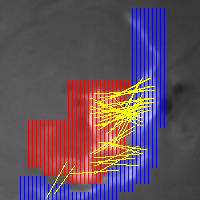
|
020125:
What's connected to what?
The 10th anniversary of the Yohkoh launch took place in August
2001,
and we have just completed a
wonderful meeting
to commemorate it.
As one might expect from a mature program such as Yohkoh, the
quality of the presentations was excellent; what one might not have
expected was the real novelty of many of them.
|
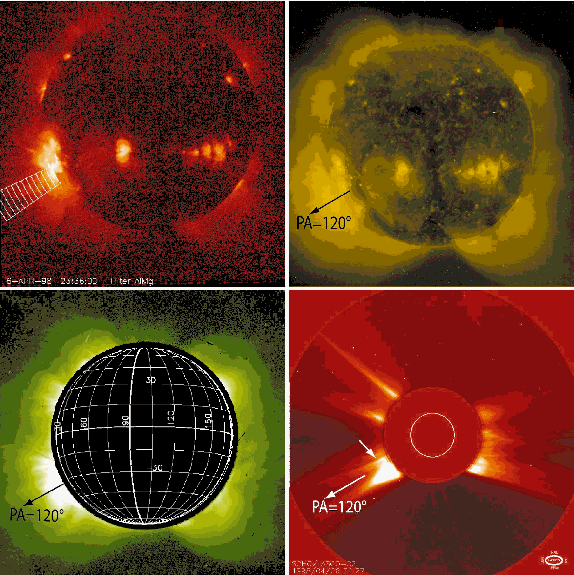
|
020201:
Spectra from the high corona
The work reported here, based on a presentation at the 10th anniversary
meeting, combines Yohkoh images with spectra from the
UVCS
on board
SOHO,
a spectroscopy instrument we've never done a Yohkoh science
nugget
about.
Since one rarely understands the physics until one does
spectroscopy, it is high time.
|

|
020208:
Moreton waves and coronal waves
In this age of great interest in "space weather", people often talk about
shock waves associated with CMEs as the main agent for solar energetic particle
(SEP) events. How are these related to Moreton waves, known for many
years, and the ones we see in the X-ray corona?
|
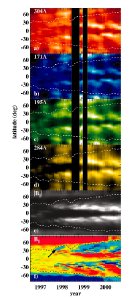
|
020215:
Synoptic maps -- the big picture
The principal meaning of the word, 'synoptic', according to the
Merriam-Webster dictionary,
is 'affording a general view of a whole'.
Synoptic solar observations help us get the big picture
about how the Sun generates its all-important magnetic field.
|
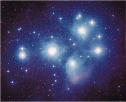
|
020222:
A solar Pleiades?
In this nugget we show a puzzling
coincidence in the formation of a swarm of tiny active regions.
There is no known physical mechanism, so this
may simply be a coincidence.
But, if one could find a second case, one would be tempted to
seek some bizarre explanation invoking new physics.
|
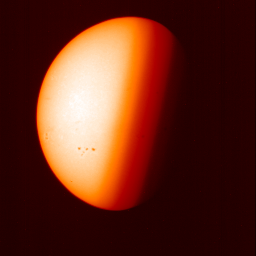
|
020301:
Problems of refraction
It's every astronomer's dream environment: space, where no atmosphere
gets
in the way.
No "seeing", no refraction, no scattered light, no dirt.
Alas the Universe is not that simple.
Even X-ray observatories such as Yohkoh or HESSI have their
specific problems, as discussed in this nugget.
|
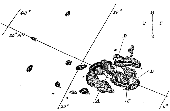
|
020308:
Topology of a White Light Flare
"White light" flares are those flares which are detectable in visible
light, as opposed to the ultraviolet or X-ray radiation we usually discuss
in these nuggets. These flares are among the most energetic of solar
events. This nugget shows that by following another high-energy signature
-- hard X-rays -- we gain clues about how the energy release is related to
the arrangement of magnetic fields.
|
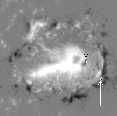
|
020315:
Flux emergence and CME events
In this followup to a previous nugget, the relationship of
CME-related flares to moving magnetic features and the emergence of
magnetic flux is examined. Includes an excellent movie of the magnetic
field at the photosphere.
|
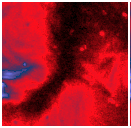
|
020322:
How Deep is a Coronal Hole?
A "coronal hole" is a region where the upper atmosphere of the Sun appears
to be missing something. We know that these areas are sources of the
high-speed solar wind, but how easy are they to detect? This nugget
demonstrates that combining many images can be helpful, especially for
pinning down very faint subjects.
|

|
020329:
Coronal hard X-rays and millimeter waves
The first installment in a brief series, look to this nugget for a quick
look at hard X-ray imaging and the time variations of X-ray spectra, as
well as a name-dropping list of solar X-ray satellites!
|
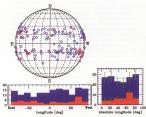
|
020405:
WBS Flare Statistics
Yohkoh carried a Wide Band Spectrometer (WBS) as its fourth
scientific instrument. You haven't seen much mention of WBS in these
nuggets, because the analysis of the data is extremely difficult. This
nugget introduces WBS data to the nugget-reading world, with a
presentation of a brand-new PhD thesis about the statistics of the most
energetic solar flares, the gamma-ray flares.
|
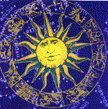
|
020412:
Homologous Jets
We've done several nuggets on coronal jets, because they are truly
fascinating: eruptions of million-degree plasma channeled by magnetic
fields so that they look nearly linear. Check out this nugget for an
additional view, and introduction to some new web tools for the latest
solar events.
|
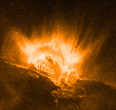
|
020419:
A Wonderful X-class Flare for RHESSI
On Sunday, April 21, the Sun produced a flare that was beautiful for a
couple of reasons. It was a high-energy X-class flare, the first seen by
the new solar observatory RHESSI; it was simultaneously observed by
several telescopes around and above the world; and moreover, it was just a
good-looking flare (though we may be biased about such things). Check
this nugget to see data in a variety of wavelength regimes.
|

|
020426:
A Summary of the September 1997 Filament
Filaments are curious creations, collections of cool chromospheric
material suspended at coronal elevations. How do they get there? How are
they related to the magnetic fields? This nugget reviews some
filament observations from several telescopes, and compares the filament
to the magnetic field configuration.
|
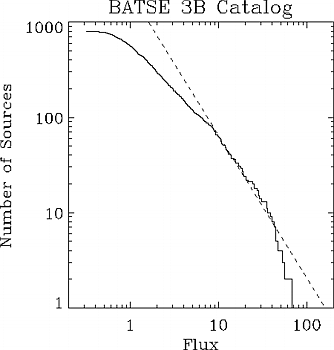
|
020503:
When Do Powerful Flares Occur?
In studying the Sun -- and other stars too -- we are naturally drawn to
the exciting transient events, like flares; and the bigger, more powerful
flares can exert a stronger pull on our curiosity. This nugget examines
the question of how many huge flares we should expect, and what
does it mean when we see more/fewer than expected.
|
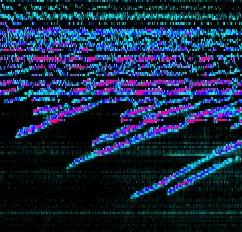
|
020510:
Complicated Radio Waves from an X-class Flare
A few weeks ago, we showed you images from a powerful flare on
April 21, 2002. The images showed
remarkable
structures and motions, and the fun doesn't stop there -- this nugget
introduces you to additional observations of this same flare, in radio.
The data are no less mystifying.
|
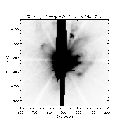
|
020517:
An Invisible Hand: The X15 Flare of April 15, 2001
To call this a "reconfiguration of a magnetic structure" might be an
understatement -- this was one of the biggest solar flares in recent
history, and the associated coronal arcade appears to be blown away.
|
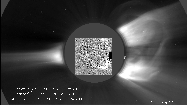
|
020524:
Comparing Coronal Dimming at Different Temperatures
When a region in the coronal images becomes dark, is it because the plasma
has left the scene, or because the temperature has changed, making it the
"wrong color" for the telescope's filter? This
nugget shows that the way to find out is to look in as many different
telescopes as you have available. |
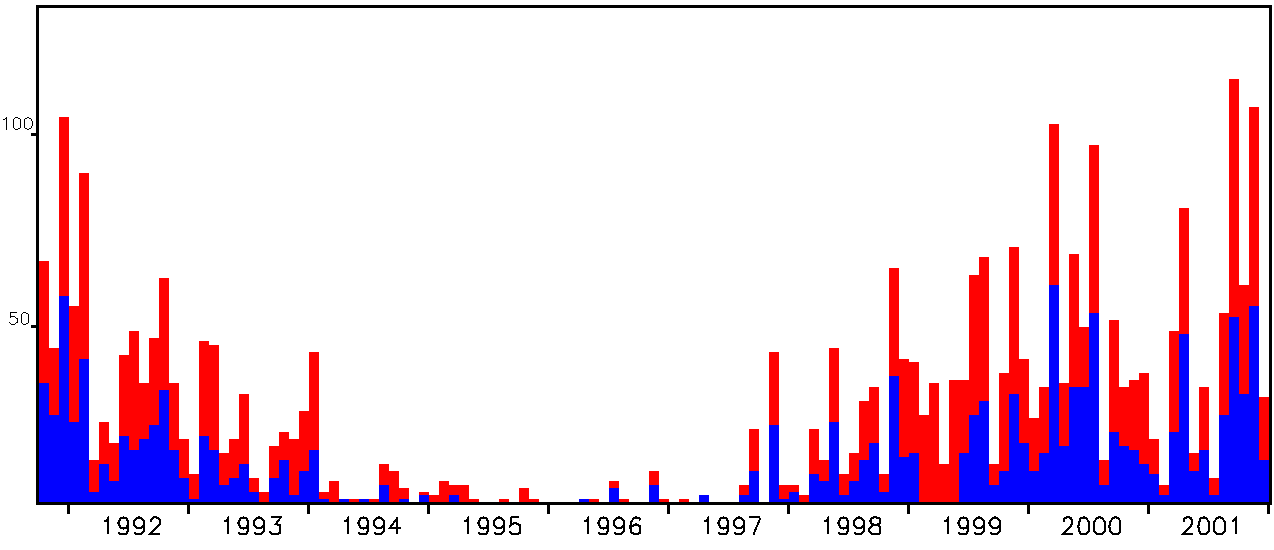
|
020531:
The Yohkoh Hard X-ray Flare Catalog
As part of the project to archive all the Yohkoh solar data, a
catalog of HXT images from all the flares observed during the mission
(several thousand of them!) has been created. Check out this nuget for an
introduction to the online data catalog.
|

|
020607:
The Yohkoh Galileo Project
What do you do when you've finished taking photographs? You put them in
an album! Well, if you've got ten years' worth of images, light curves,
and spectra, then it's going to be a very big album, and a very big job.
This week's nugget describes the task to create a lasting archive of the
Yohkoh data.
|

|
020614:
Properties of Big Flares in this Cycle
All flares are not the same. Sounds obvious, but it bears some
investigation to find how often a big flare is related to, say, a coronal
mass ejection or to a sudden increase of energetic particles at the Earth.
This nugget investigates the association of the biggest flares with some
elements of space weather.
|
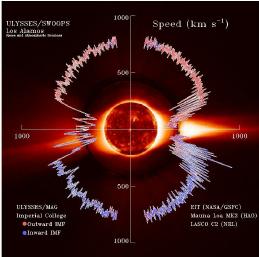
|
020621:
Slow Solar Wind Coming From
Active Regions
Coronal holes have appeared in several previous nuggets, including some
revelations of the "skinny" or "narrow" coronal holes. This week's nugget
announces the discovery that these features appear to be a source of the
slow component of the solar wind.
|

|
020628:
A Balloon, a Novel Detector, and Solar Hard X-rays
If you want to see the Sun's X-radiation, then you'll need to get outside
of Earth's atmosphere. For many researchers over the years, balloon rides
have been just the ticket. Check out this nugget for insight into how new
detectors are space-tested, without risky (and costly!) rocket flights.
|
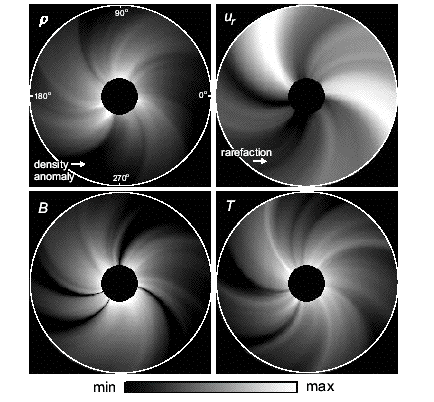
|
020705:
The "Disappearing Solar Wind" Revisited
Do you remember "the day the solar wind disappeared"? It was a pretty
unusual occurrence, and a lot of research has focused on trying to
understand it. This nugget recaps the circumstances of the event, and
describes some of the ongoing research.
|
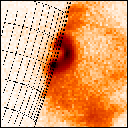
|
020712:
Footpoints (and ankles?)
"Footpoint" is the term we use to describe the location where coronal
magnetic field lines connect to the photosphere -- they are the apparent
"feet" of the coronal loops. As such, they are located in magnetically
interesting places, and their behavior during flares helps us to
learn about the structure in general. Read on!
|

|
020719:
Supra-arcade downflows in the April 21 flare
We see over and over again that the combination of different kinds of data
helps us to look at scientific problems from new angles. This week's
nugget combines imagery from TRACE and spectroscopy from SoHO/SUMER for a
closer look at an enigmatic solar phenomenon.
|
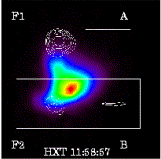
|
020726:
Footpoints slipping along
As we discussed a couple of weeks ago, the footpoints of coronal loops are
where the magnetic field connects to/through the photosphere. Changes in
the location and in the "color" of the hard X-radiation tell us about the
evolution of the magnetic field and of the population of charged particles
which are responsible for the radiation.
|

|
020802:
A New Word in the English Vocabulary?
Every mission produces its own stock of jargon, and Yohkoh is no
exception. Here's a bit of obscure terminology that has already found its
way into a new space mission.
|

|
020809:
Setting the Record Straight on Big Flares
When we count the number of solar flares, how many big ones should we
expect, and how many really big ones? Previous nuggets have
pointed out an apparent shortfall of the biggest flares during some time
periods, but new analysis suggests that we might have been mistaken.
|

|
020816:
RHESSI's First Big Flare -- The New and the Newer
Our current model of CME-related flares includes a description of how
coronal arcades are built. But this week's nugget introduces some
observational details that may help us to refine the specifics of the
process.
|

|
020823:
Coronal Oscillations and Type II Bursts
Magnetic fields can exert pressure and support tension, and as a
consequence they can oscillate when disturbed -- no abstract idea, these
oscillations have been observed. This week's Nugget asks if the
disturbances which set off the oscillations may simultaneously be
responsible for another enigmatic solar phenomenon: Type II radio bursts.
|
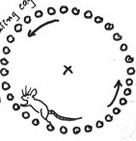
|
020830:
Precise Hard X-ray Measurements
The highest-energy photons -- hard X-rays and gamma rays -- are very
difficult to make images with, because they do not respond to lenses and
mirrors in the same way as lower-energy photons. We use "modulation
collimators", a kind of masking, to create images of hard X-ray sources
with Yohkoh HXT and RHESSI. Look here for a cursory comparison of
the resolution possible with these two telescopes.
|
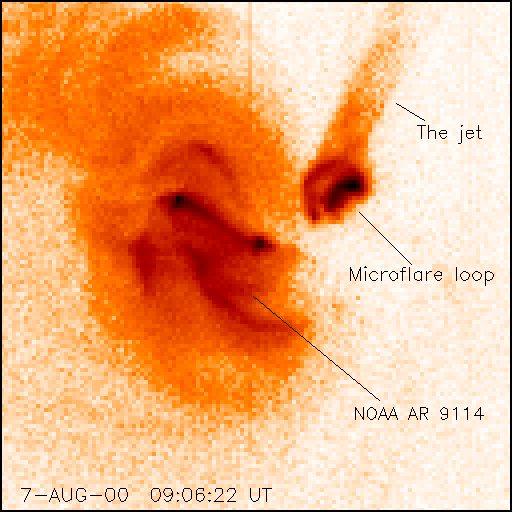
|
020906:
Has RHESSI Observed Yohkoh Jets?
X-ray jets were an exciting discovery of Yohkoh -- now it appears
that our newest solar observatory, RHESSI, may be able to observe them as
well, and in a different energy range.
|
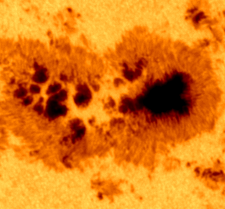
|
020913:
A Little Bit of (Naked Eye) Sun Spot History
Just in case you forgot, here's a reminder that the Sun has been high on
the list of astronomers' targets for a very, very long time.
|
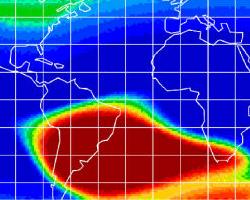
|
020920:
Mysterious Anomalies in Better Detail
Charged particles can be a nuisance to high-energy detectors like those on
Yohkoh, SoHO, TRACE, and RHESSI. This week's nugget summarizes (very
briefly) the source and location of some particles which interfere with
observations by three of these four spacecraft.
|
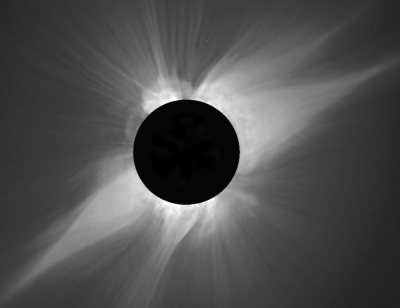
|
020927:
Coronal Compton Scattering?
The first observation of the corona was in fact not in X-rays or
ultraviolet, but ordinary white light. And its visibility is due not to
emission from million-degree plasma but from scattering of light (that is,
reflected light) from electrons. This nugget describes an extension of
the original coronal observations to the regime of hard X-rays.
|
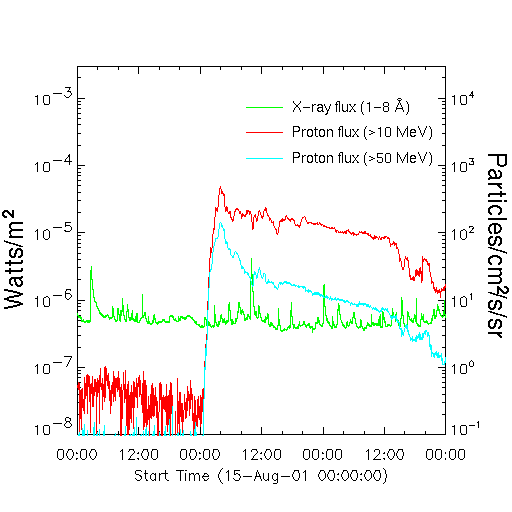
|
021004:
Possible Solar Signatures of SEP Events
Energetic particles arriving at Earth can cause big problems, and the Sun
is a major source of these particles. It's easy to say that the cause is
solar flares, but this nugget demonstrates that such a broadbrush
description may be misleading: some ejections are more likely to send
energetic particles to Earth than others.
|

|
021011:
A 'Simple Loop Flare' Up Close
We've seen many nuggets about eruptive flares -- but we must
remember that many flares don't seem to "explode" and throw material out
into space. Do these "confined" or "simple loop" flares have a different
kind of basic physics?
|
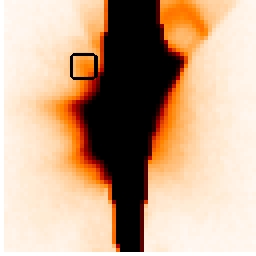
|
021018:
Chromospheric Evaporation in Flares
The brightly emitting plasma we see in the corona arrives there from
somewhere else, probably from the lower levels of the atmosphere.
How is the plasma driven there, and how quickly is it lifted?
|



















































































